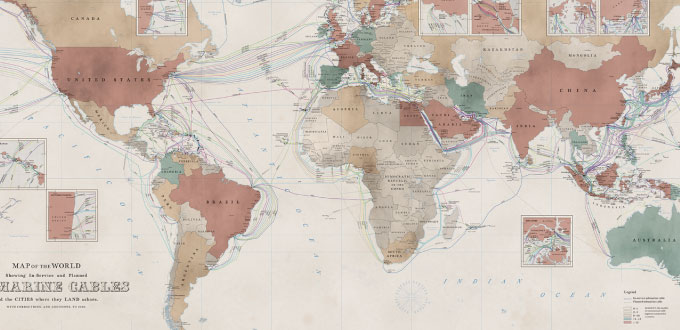“The World Connects to the Internet Over Subsea Cables”
08/10/2020

Submarine cables play an important role in global Internet infrastructure and there are currently around 406 operational submarine cable systems worldwide, Rogerio Mariano, Director of Network Edge Strategy at Azion Technologies, shared with participants at LACNIC 34 – LACNOG 2020.
In his presentation titled “Jules Verne and the 20,000 Leagues of Subsea Cables: A True Tale About Submarine Cables,” Mariano noted that submarine cables are “one of the wonders of engineering.”

He observed that 99% of the world is currently connected to the Internet through submarine cables and that only 1% is connected via satellite. “The world is connected across the oceans,” Mariano said.Twenty five years ago, in 1995, 50% of Internet traffic used submarine cables while the other 50% connected via satellite.
In his presentation, Mariano observed that approximately 100,000 new kilometers of cable are being laid each year and that these cables have a twenty-five-year lifespan. Meanwhile, the investment required for laying an intercontinental cable is approximately a billion dollars.
A number of geopolitical factors and interconnection and financial analyses must be considered for installing a cable. “What will the cable connect? Which countries? Which populations? What is the Internet penetration rate in those countries? Will there be any return on the investment? And what about the timeline? How long will it be before the cable is operational? The value of a communications network is proportional to the number of users who access the system,” the expert added.
Regulations and geopolitical issues are also complex aspects of submarine cables. “The right to lay a cable over one location or another, its potential environmental impact, exclusive economic areas, fisheries, areas with greater levels of activity, coast guard operations, permits, municipal and local authorities. Multiple factors are involved,” he explained.
He added that there are major differences between the speed of connections using submarine cables and satellite connections and that satellite engineering is different from undersea cable engineering. He then noted that, for example, satellite technology has a lifespan of five years, while cable technology can last for 25 years and photon speed increases the speed of cable transmissions.
To conclude, Mariano shared with the audience several global submarine cable maps (https://www.submarinecablemap.com/ and https://submarine-cable-map-2020.telegeography.com/), as well as a map one showing the submarine cables for the region of Latin America and the Caribbean (https://latin-america-map-2019.telegeography.com/).